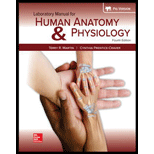
Concept explainers
The most basic unit of matter is
- energy.
- an element.
- a molecule.
- a cell.
Introduction:
Any substances that have their own mass and take up space are called a matter. All the atoms, as well as compounds, are composed of a small unit of the matters, whereas matters are consist of elements that have particular physical and chemical properties. It cannot be converted into simpler substances by using a normal chemical reaction. For example, gold and carbon is an element.
Answer to Problem 1PL
Correct answer:
The correct answer is option (b) an element.
Explanation of Solution
Explanation/justification for correct answer:
Option (b). An element. It is a substance that has the same number of protons or has the same atomic number. They are the simplest substance that cannot be broken down into smaller substances. They can only be converted into other elements by using the nuclear method. So, the correct answer is option (b).
Explanation for incorrect answer:
Option (a). Energy. It is defined as the capacity of the body or any other physical system to do work. The energy of the system remains constant though it can be transferred from one form to another. Energy cannot be created and destroyed. So, this is an incorrect option.
Option (c). Molecule. A molecule is made up of atoms that are chemically bonded with each other. They are the smallest particle of an element or compound. So, this is an incorrect answer.
Option (d). Cell. The cell is the structural and functional unit of life. It is the basic membrane-bound unit that has fundamental molecules. So, this is an incorrect answer.
Want to see more full solutions like this?
Chapter 3 Solutions
Laboratory Manual For Human Anatomy & Physiology
Additional Science Textbook Solutions
Biological Science (6th Edition)
Campbell Essential Biology (7th Edition)
HUMAN ANATOMY
Genetics: From Genes to Genomes
Physics of Everyday Phenomena
Chemistry: A Molecular Approach (4th Edition)
- Briefly state the physical meaning of the electrocapillary equation (Lippman equation).arrow_forwardExplain in a small summary how: What genetic information can be obtained from a Punnet square? What genetic information cannot be determined from a Punnet square? Why might a Punnet Square be beneficial to understanding genetics/inheritance?arrow_forwardIn a small summary write down:arrow_forward
- Not part of a graded assignment, from a past midtermarrow_forwardNoggin mutation: The mouse, one of the phenotypic consequences of Noggin mutationis mispatterning of the spinal cord, in the posterior region of the mouse embryo, suchthat in the hindlimb region the more ventral fates are lost, and the dorsal Pax3 domain isexpanded. (this experiment is not in the lectures).a. Hypothesis for why: What would be your hypothesis for why the ventral fatesare lost and dorsal fates expanded? Include in your answer the words notochord,BMP, SHH and either (or both of) surface ectoderm or lateral plate mesodermarrow_forwardNot part of a graded assignment, from a past midtermarrow_forward
 Concepts of BiologyBiologyISBN:9781938168116Author:Samantha Fowler, Rebecca Roush, James WisePublisher:OpenStax College
Concepts of BiologyBiologyISBN:9781938168116Author:Samantha Fowler, Rebecca Roush, James WisePublisher:OpenStax College Human Biology (MindTap Course List)BiologyISBN:9781305112100Author:Cecie Starr, Beverly McMillanPublisher:Cengage Learning
Human Biology (MindTap Course List)BiologyISBN:9781305112100Author:Cecie Starr, Beverly McMillanPublisher:Cengage Learning
 Comprehensive Medical Assisting: Administrative a...NursingISBN:9781305964792Author:Wilburta Q. Lindh, Carol D. Tamparo, Barbara M. Dahl, Julie Morris, Cindy CorreaPublisher:Cengage Learning
Comprehensive Medical Assisting: Administrative a...NursingISBN:9781305964792Author:Wilburta Q. Lindh, Carol D. Tamparo, Barbara M. Dahl, Julie Morris, Cindy CorreaPublisher:Cengage Learning Biology Today and Tomorrow without Physiology (Mi...BiologyISBN:9781305117396Author:Cecie Starr, Christine Evers, Lisa StarrPublisher:Cengage Learning
Biology Today and Tomorrow without Physiology (Mi...BiologyISBN:9781305117396Author:Cecie Starr, Christine Evers, Lisa StarrPublisher:Cengage Learning





